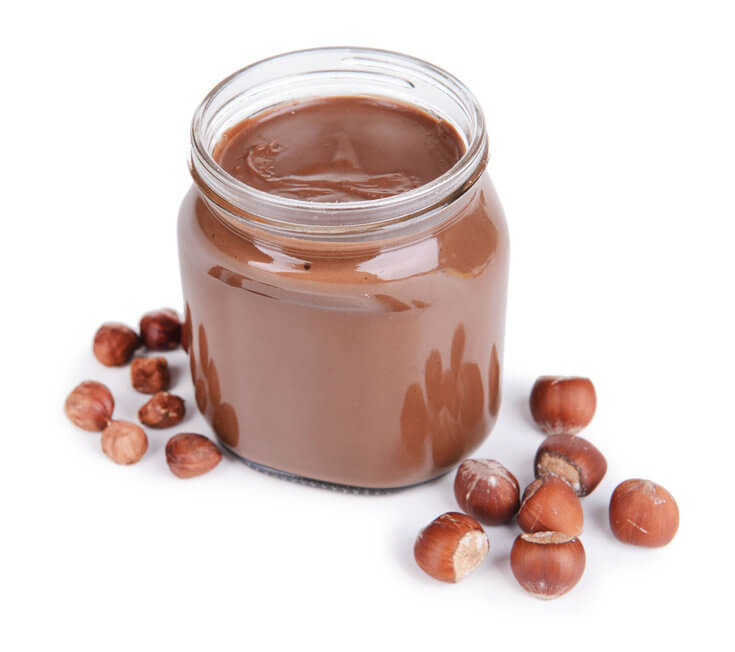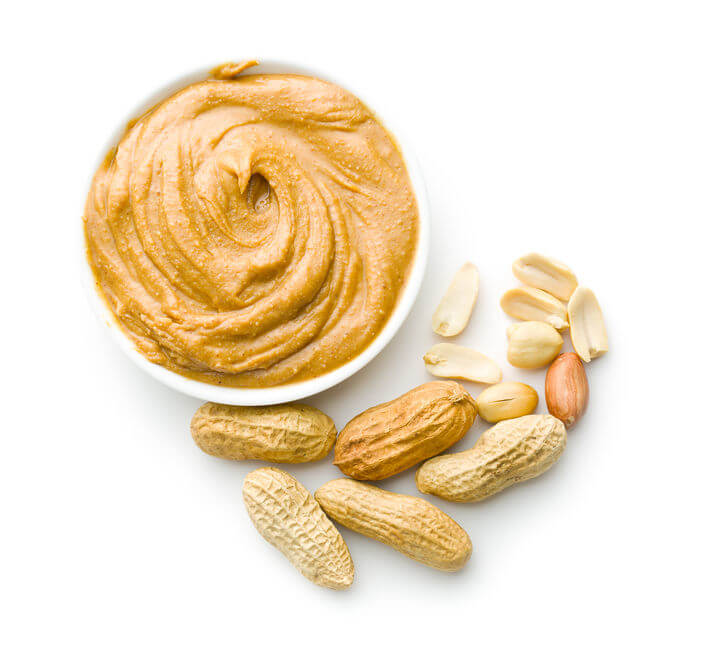The absolute glut of diverse nut butters on the market these days is enough to make any spread-loving foodie jump for joy. Whether you like them on toast, in your baked goods, or added to salad dressing, nut butters are a great way to add delicious protein and healthy fats to your diet. When it comes to peanut butter vs hazelnut butter though, you might understandably find yourself baffled.
After all, they do appear to be very similar on the surface, both in terms of flavor profile and nutritional value.
However, each of these delectable spreads may impart different health benefits. For people with certain allergies, choosing one spread over the other could mean continuing to enjoy the creamy treats they love.
What separates these two nut butters and how can you pick the right one for your pantry? Here’s what you need to know.
What Is Hazelnut Butter?

Hazelnuts, or filberts, are tree nuts that are tasty on their own, roasted, or used in preparations like baked goods.
You may already be familiar with hazelnut spreads like Nutella that add cocoa to the mix to create a tantalizing dessert dip – this is no surprise, since hazelnuts are known for a slightly sweet flavor.
However, hazelnut butter tends to eschew sugars and other additives, complicating the choice between peanut butter vs hazelnut butter.
Hazelnut butter is made when the nuts are shelled, roasted, and ground to create a thick, creamy paste that approximates the texture and consistency of other nut butters.
What Is Peanut Butter?

Peanut butter is more than just a delicious, creamy spread – it’s part of our national heritage.
In truth, the Inca culture in South America beat us to the punch by several hundred years, grinding peanuts into paste long before John Harvey Kellogg “invented” his boiled and ground peanut butter in 1895.
After that, peanut butter became an indelible part of our culture.
Peanuts: Not Actually Nuts
The funny thing is that peanut butter isn’t actually made with nuts.
Peanuts are legumes, which means they come from the same family as peas, beans, and lentils.
When they’re shelled, roasted, and ground, they make a creamy butter that can be used for a myriad of purposes, from straight consumption to bread spread to an additive in baked goods, smoothies, salad dressing, and more.
Peanut Butter VS Hazelnut Butter
Let’s take a closer look at how the two nut butters compare by a variety of different standards.
Nutrition Facts
What’s in a nut (or a legume, as the case may be)?
The first step in comparing peanut butter vs hazelnut butter is to look at their nutritional values.
Let’s consider two popular brands: Skippy Creamy Peanut Butter and Vor Pure Hazelnut Butter.
In a 2-tablespoon serving of Skippy, you’ll get:
- Calories: 190
- Total Fat: 16g
- Saturated Fat: 3g
- Sodium: 150mg
- Carbs: 6g
- Fiber: 2g
- Sugars: 3g
- Protein: 7g
A 2-tablespoon serving of Vor, on the other hand, offers:
- Calories: 190
- Total Fat: 17g
- Saturated Fat: 1g
- Sodium: 0mg
- Carbs: 5g
- Fiber: 3g
- Sugars: 1g
- Protein: 4g
In terms of calories, total fat, carbs, and fiber, the race is too close to call.
However, you’ll note that hazelnut butter wins out in a couple of areas, primarily lower saturated fat and sugar and far less sodium.
Some of this could be due to the fact that peanut butter often features additives (especially salt and sugar).
Choosing a natural product could even out the score. Peanut butter pulls ahead in the protein category, however.
Potential Benefits
When it comes to the battle of peanut butter vs hazelnut butter, which one offers greater health benefits? Let’s examine.
Peanut Butter Benefits
Here are some of the benefits you’ll enjoy when reaching for that jar of peanut butter:
Vitamins & Minerals
In addition to offering a good source of protein, peanut butter delivers some other desirable nutrients, including niacin, vitamin E, and vitamin B6e.
Healthy Fats
When included in a healthy diet, peanut butter adds good fats (provided it doesn’t have too many additives) that can contribute to heart health and help to manage a healthy weight. [source]
Of course, peanut butter is high in fat, which means the best health benefits result when you consume it in moderation.
Hazelnut Butter Benefits
Here are some benefits you’ll enjoy when opting for hazelnut butter instead:
Weight Management
Like peanuts, hazelnuts have several potential health benefits.
Studies have found that eating nuts can help to maintain a healthy weight.
Lowering Bad Cholesterol
Hazelnuts could have heart health benefits that include reducing LDL cholesterol when consumed daily. [source]
Fiber
Hazelnuts are also a good source of dietary fiber that can help to regulate digestive function.
Antioxidants
Antioxidants like vitamin E found in this tree nut could help to protect against cell damage linked to health concerns like cancer.
Interestingly, hazelnuts may also help to reduce inflammation.
It bears noting, however, that hazelnuts are a tree nut, and like other nuts in this category (almond, walnut, cashew, etc.), they are a fairly common food allergen.
With that being said, having a nut allergy doesn’t necessarily correspond to a peanut allergy, so people who are allergic to tree nuts may be able to consume peanuts and vice versa.
Profiling Flavors
Peanuts and hazelnuts have a similar flavor profile, in that they display nutty, savory notes. However, they’re not the same, and flavor could be the deciding factor when it comes to peanut butter vs. hazelnut butter.
Peanut Butter VS Hazelnut Butter: How They Taste
Peanuts aren’t particularly flavor-packed. It’s only when you roast them and add a little salt that the rich, nutty flavor explodes.
Hazelnuts have a slightly more complex flavor that’s a bit earthy. They lean toward sweetness, especially when roasting brings out the flavor.
Baking & Recipes
If you’re making your own nut butter, roasting is the key to unlocking an enhanced taste experience, and it will heighten the distinction between the two flavor profiles.
In both cases, you’ll shell the nuts and roast at 350° for about 15 minutes. Once they’re cool, you can remove the skins (for creamier consistency) and grind them in the food processor.
Both peanuts and hazelnuts are oily, so you don’t really need to add oil.
In the case of peanut butter, adding salt is common to improve the flavor.
This is not typical of hazelnut butter, which is more often paired with ingredients like cocoa to bring out a natural sweetness.
How to Use Your Nut Butters
Both peanut butter and hazelnut butter can be used in similar ways. They are frequently used as a bread spread, to dip fruits and veggies, and as an additive in smoothies, baked goods, and salad dressings.
Because they have slightly different flavors, your best bet is to experiment to see which you like better in different recipes.
If you’re looking for more of a savory addition, peanut butter may be your best choice. For something a bit sweeter, hazelnut butter could win out.
Which Is Right For You?
Like most nut butter debates, the deciding factor is often taste. It depends on your preferred flavor profile and the way that you plan to use your ingredients.
However, peanuts and hazelnuts also have slightly different health benefits that could cause you to lean one way or the other.
If you happen to have a peanut or tree nut allergy, that will certainly impact your decision, too. In that instance, it may be worth considering tahini.

